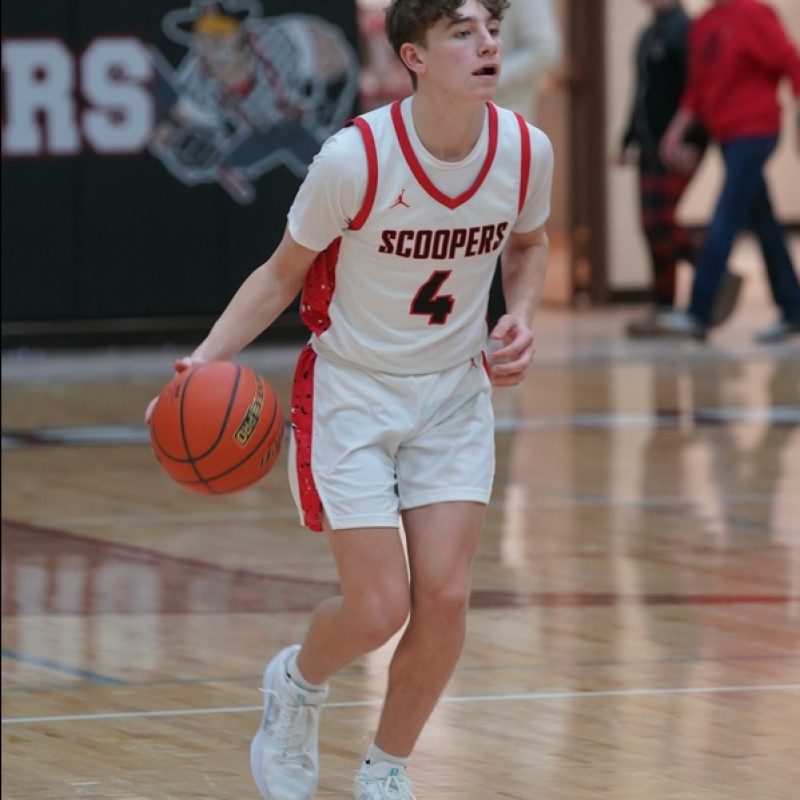BELVIDERE, SD – South Dakota’s drought is bad and getting worse. And a new, long-range forecast from the National Oceanic and Atmospheric Administration offers little hope for green pastures ahead.
“It’s dry,” says Dan Rasmussen, who ranches near Belvidere in west-central South Dakota. “Dig a hole in the pasture and it’s dry going down—-people who are putting in water lines say it’s dry five feet down,” Dan Rasmussen said last week. “We’re hurting. A lot of cows have gone through the sale barn, and a lot of calves,” the west-central rancher said. “I’m looking at less than 50 percent of the average forage production.”
Last week’s Drought Monitor Map showed drought is creeping farther across the state and increasing in intensity. The map shows almost twice as many acres of severe drought—- 46 percent of the state–compared to 25 percent the previous week.
Historically, impacts of severe drought include early cattle sales, low water supplies in stock ponds and a shortage of hay. “The long-range NOAA forecast has us drier than normal through August,” Rasmussen said. “We’re all backed into a corner, up against it. But I know the ranchers who practice soil health, leave grass behind, give pastures a lot of rest—-they’re ahead of the game.”
Rasmussen has had a drought plan with such practices for more than 25 years.
“Good range management is the basis of every drought plan,” he said. “Nature wants you to protect the land by good grazing practices. So, we’ve been doing that and seeing benefits in dry years. That’s the first part of our drought plan. The second part is to start selling livestock. We have different kinds of livestock on this ranch; cow-calf, yearling steers and heifers, organic yearling heifers, and purchased yearlings.
“Our plan is to start selling yearlings. We’re going to implement that pretty quickly, in the next few weeks,” Rasmussen said. “We also sold the lower-class cows last winter. We’ve downsized our cow herd, we’re in a position to sell 400-500 yearlings, and that takes a lot of pressure off the pastures.”
NRCS State Grazinglands Soil Health Specialist Tanse Herrmann said the drought is already having an impact in South Dakota’s ranching communities. “I’m hearing an unusual number of livestock are being sold early. I don’t take the drought lightly–everyone will be affected.”
However, Herrmann said that ranchers with a good rotation and resilient grass and soils will fare better than those who didn’t have ground cover going into winter. “Healthy soils infiltrate rainwater much more quickly than soils with high degrees of disturbance, such as overgrazing,” he said. “Surface protection by plant residues–ungrazed plants–is a critical piece of high functioning soils, even in drought.”
He suggested ranchers who are forced to sell more livestock than intended might take advantage of more free time to attend a grazing school, rub elbows with mentors who have been through droughts, and begin to consider a new approach to grazing for resilient soils and grasslands. Help is available from NRCS offices in every county, he said, and mentors are willing to spend time with other ranchers.
“It’s a scary thing, and difficult to make rational decisions in a drought,” Rasmussen said. “It’s important to find somebody who’s been through a number of droughts, someone you can talk to and discuss ideas. Does nature want you to keep your cows on pasture ’til it’s black? That’s not a good idea,” he said. “Instead, start planning and figuring ways to destock or further destock your herd.
“Then be prepared to bring it back, bring those numbers back. That’s the key to good range management, healthy soil and healthy pastures. It will rain again. And when it rains, if the pastures weren’t grubbed down, if they were in good shape going into the drought, they’re going to come back really quick.”
Rasmussen said the drought is going to hurt, no matter what, but suggests ranchers can still be prepared and offered this advice to his peers: “Think ahead, at least six or eight months, instead of letting yourself become a victim of circumstance. Every drought we go through we’re a little better prepared for the next one, because you learn.”
The South Dakota Grassland Coalition has established a website for drought information at www.sddroughtplan.org. USDA’s Natural Resources Conservation Service and South Dakota State University have drought planning information online as well.












